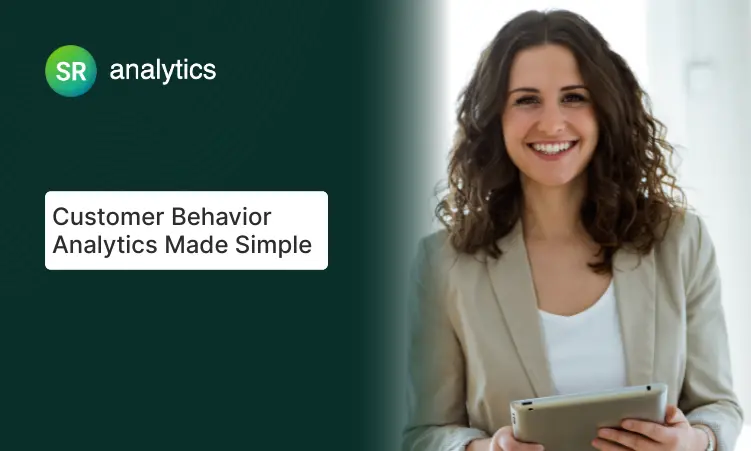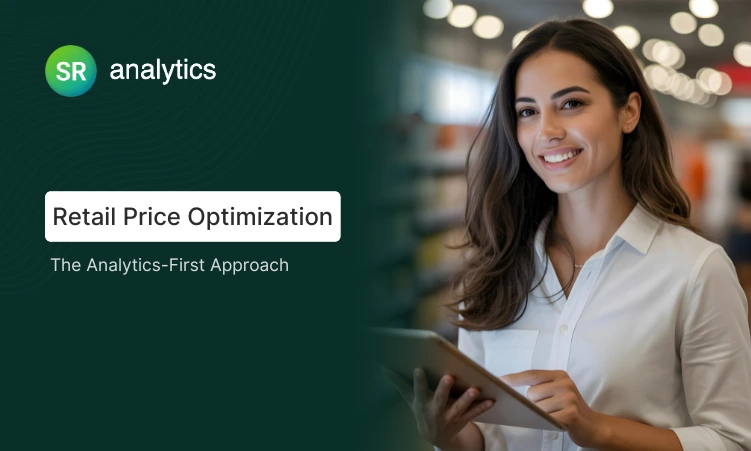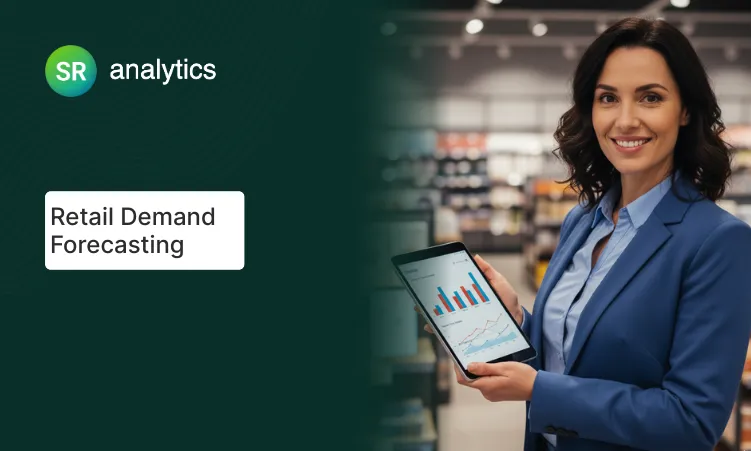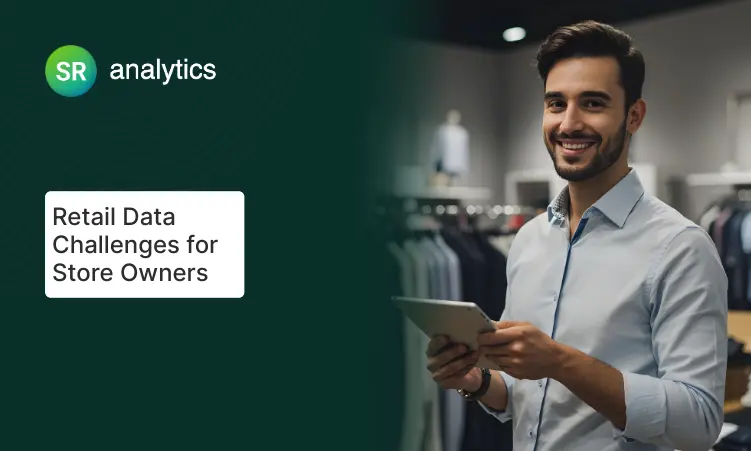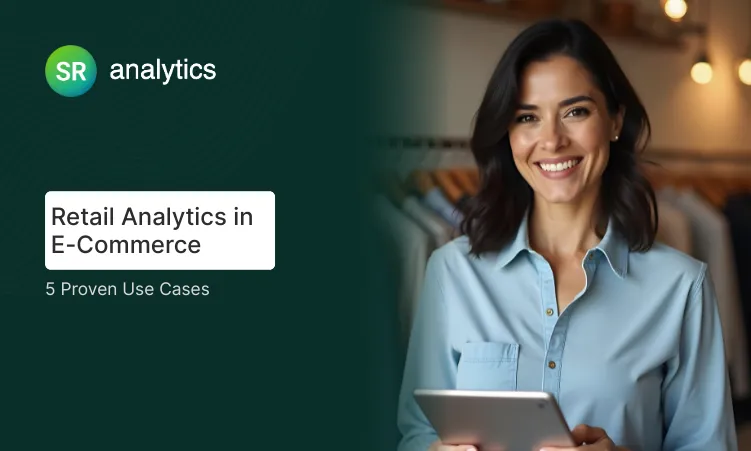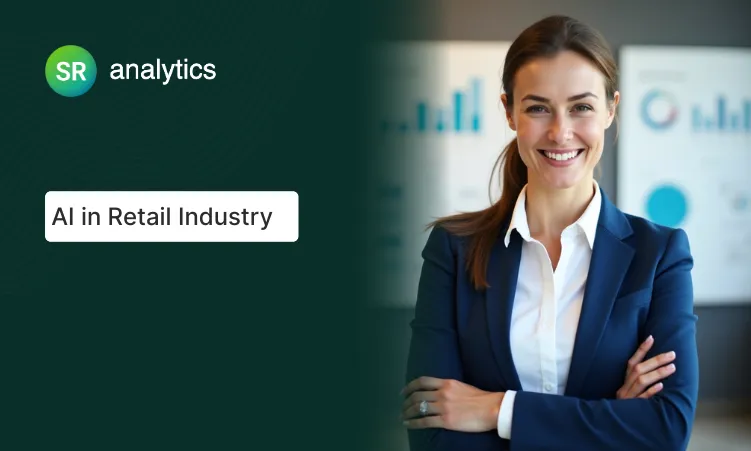Key Highlights:
• AI predicts customer purchases with 85% accuracy
• Inventory forecasting prevents $2M+ overstock losses
• Automated pricing boosts profit margins 15-30%
• Digital customer twins increase conversion 34%
• Small retailers access enterprise AI for $200/month
Introduction
“While you update spreadsheets, competitors’ AI steals your customers by predicting their next purchase.”
Sarah’s $847,000 mistake happened in 30 seconds.
She approved a summer inventory order based on “gut feeling” and last year’s data. Meanwhile, her competitor’s AI analyzed 50,000 customer interactions and predicted the opposite trend.
Three months later, Sarah’s warehouse overflowed with unsold merchandise. Her competitor sold out and captured market share.
I’ve watched this story repeat across 200+ retail implementations. The difference between winners and losers isn’t size, budget, or experience. It’s predictive customer behavior analytics.
Here’s how smart retailers are using AI to read customers’ minds and increase sales by 25%.
Why Your Customers Are Becoming Unpredictable (And How AI Solves This)
The $1.1 Trillion Guessing Game
While you’re analyzing last month’s sales reports, your customers have already moved on to next month’s trends. The National Retail Federation reports that poor demand forecasting costs retailers $1.1 trillion annually through overstock markdowns and lost sales from empty shelves.
But here’s what’s changed: successful retailers stopped guessing. They’re using customer behavior analytics to predict purchases with 85% accuracy.
My client Lisa owns three boutique locations in Texas. Last year, she lost $200,000 on spring inventory that never sold. This year, her AI flagged a 400% spike in searches for “vintage band tees” among her customers. She ordered accordingly and sold out in two weeks, generating $150,000 in unexpected profit.
The difference? Predictive customer behavior analytics replaced gut feelings with data-driven decisions.
How Amazon Reads Your Mind (And You Can Too)
Amazon doesn’t dominate retail because of lower prices or faster shipping. They dominate because their recommendation engine drives 35% of all purchases by predicting what you want before you search for it.
Their inventory system rarely runs out of popular items because algorithms predict demand weeks in advance. When you see “Customers who bought this also bought…”, you’re seeing behavioral prediction in action.
The game-changer? These same capabilities are now available to retailers of all sizes for under $500 per month.
The Evolution from Reactive to Predictive Retail Analytics
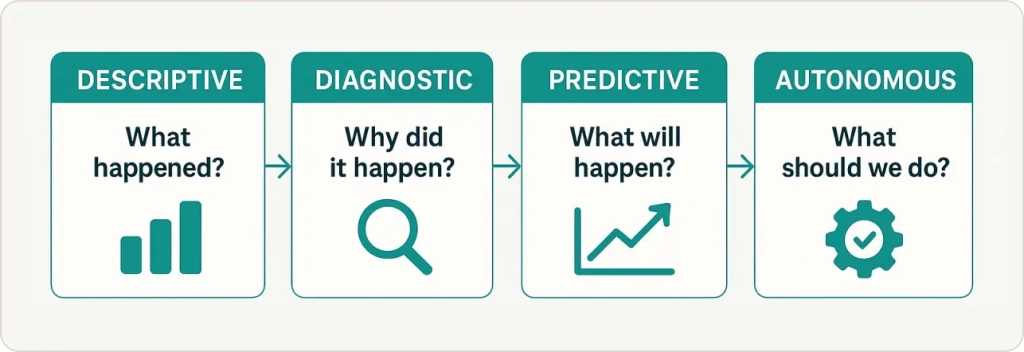
What is Customer Behavior Analytics in Retail?
Customer behavior analytics uses AI to analyze how customers interact with your store, website, and products to predict future purchases, optimize inventory, and personalize marketing campaigns with 70-85% accuracy.
How Much Does Retail Analytics Software Cost?
Retail analytics software pricing varies by business size and features:
- Small retailers (under $5M revenue): $200-500/month for basic predictive analytics
- Medium retailers ($5M-50M revenue): $800-2,000/month for advanced customer insights
- Large retailers (over $50M revenue): $3,000+/month for enterprise AI capabilities
Most platforms offer 30-day free trials and require minimal setup time.
The 4 Stages of Retail Analytics Maturity
- Descriptive Analytics – Answers “What happened?” through historical reporting and basic dashboards
- Diagnostic Analytics – Explores “Why did it happen?” by identifying correlations and patterns in past data
- Predictive Analytics – Forecasts “What will happen?” using machine learning models to anticipate future outcomes
- Autonomous Analytics – Determines and executes “What should we do?” through AI systems that both predict and act independently
I’ve developed this four-stage maturity framework based on implementations across various retail segments. Each stage builds upon previous capabilities while introducing new technical requirements and organizational changes.
Case Study: How Small Pet Store Increased Sales 34% with $200/Month AI
Mike Thompson owns Pet Paradise, a single-location pet store in Ohio competing against Petco and Amazon. Last year, he was losing customers to online retailers with better prices and convenience.
His turning point came when he implemented customer behavior analytics for $200/month. The system tracked which products customers browsed online, how long they stayed on each page, and what they searched for most.
The AI discovered something surprising: customers who bought premium dog food also purchased specific toys within 72 hours. Mike created automated bundles and targeted emails. Results:
- 34% increase in average order value
- 28% improvement in customer retention
- $85,000 additional revenue in first year
The investment paid for itself in six weeks. Mike now has three locations and credits AI for his expansion success.
Case Study: Regional Fashion Chain Prevents $500K Overstock
Fashion Forward operates 12 stores across the Southeast. Their biggest challenge was predicting seasonal demand across different climates and customer preferences.
I implemented predictive analytics that analyzed local weather patterns, social media trends, and historical purchase data. The system flagged an upcoming trend three weeks before competitors noticed.
The AI predicted 70% increased demand for lightweight blazers despite it being winter. Management trusted the data and increased orders 60%.
Results:
- Sold out of blazers in 10 days
- $500K avoided in overstock markdowns
- 23% increase in gross margins that quarter
Their competitors marked down winter inventory while Fashion Forward captured emerging trends early.
Modern Customer Behavior and Technical Solutions
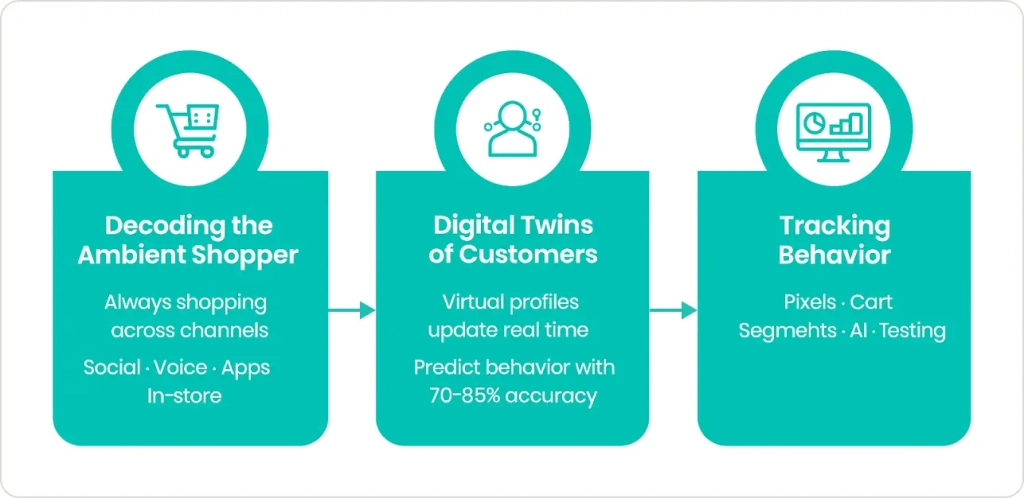
Decoding the Ambient Shopping Experience
The ambient shopper engages in continuous, passive shopping across multiple channels. These customers discover products through social media, research via voice assistants, check availability through mobile apps, and complete purchases in-store.
Research from National Retail Federation industry analysis indicates ambient shoppers expect brands to remember preferences regardless of interaction channel. They demand seamless experiences that recognize previous touchpoints and personalize accordingly.
This behavioral shift creates opportunities through multiple engagement points but challenges retailers to maintain consistency across varied interaction channels while synthesizing data from disparate sources effectively.
What are Digital Twins of Customers?
Digital twins of customers (DToCs) are dynamic, virtual representations that continuously update based on customer interactions across all channels, creating comprehensive profiles that predict individual behavior and preferences with 70-85% accuracy.
How to Implement Customer Behavior Analytics
Follow these steps to set up effective customer behavior analytics:
- Install tracking pixels on all website pages and email campaigns
- Configure heat mapping tools to monitor product page interactions
- Set up cart abandonment tracking with automated recovery sequences
- Implement cross-device identification to connect mobile and desktop sessions
- Create behavioral segments based on purchase patterns and engagement levels
- Deploy recommendation engines using collaborative filtering algorithms
- Test personalization campaigns with A/B split testing methodologies
The key to successful customer behavior analytics lies in connecting data points across all touchpoints to create comprehensive customer profiles that enable accurate purchase predictions.
Building Trust Through AI Transparency
The Strategic Value of Consumer Trust
Modern consumers demonstrate increasing awareness about data privacy and algorithmic decision-making. This consciousness creates both risks and opportunities for retailers implementing advanced analytics systems.
Modern consumers demonstrate increasing awareness about data privacy and algorithmic decision-making. This consciousness creates both risks and opportunities for retailers implementing advanced analytics systems.
Analysis of customer retention data shows that transparent data policies and ethical AI implementation increase customer lifetime value by 15%. Conversely, privacy violations or perceived data misuse result in immediate churn and long-term reputation damage.
The conscious consumer represents a growing market segment that prioritizes ethical business practices. Retailers addressing these concerns through transparent AI implementation gain significant competitive advantages in loyalty and brand differentiation.
AI Trust, Risk, and Security Management Framework
Gartner’s AI TRiSM framework provides structured approaches to managing AI implementation risks while building customer confidence. The framework encompasses explainability, model governance, privacy protection, and security management.
Explainability ensures AI decision-making processes can be understood by internal stakeholders and customers. Model governance implements systematic approaches to development, testing, deployment, and monitoring for consistent performance.
Privacy protection maintains strict data standards while enabling analytics capabilities through techniques like differential privacy and federated learning. Security management protects AI systems from adversarial attacks and ensures robust cybersecurity throughout analytics infrastructure.
Composable Analytics Architecture for Modern Retail
Building Modular Data Infrastructure
The solution to fragmented data ecosystems lies in composable data architecture – modular approaches connecting best-in-class components rather than relying on monolithic systems. This architecture enables retailers to integrate existing systems while adding capabilities incrementally.
Composable data fabrics provide unified access to information regardless of storage location. Instead of forcing all data into single systems, composable architectures create virtual integration layers enabling real-time access and analysis across multiple platforms.
Key architectural components include data integration layers connecting point-of-sale systems with e-commerce platforms, real-time processing engines enabling immediate analysis and response, API-first designs facilitating easy integration of new tools, and cloud-native infrastructure providing scalability.
The SR Analytics Implementation Framework
I’ve developed a proprietary maturity framework guiding retailers through evolution from traditional reporting to autonomous analytics. This framework provides clear roadmaps with specific milestones and capabilities at each stage.
The foundation stage establishes reliable data collection and basic reporting across key business functions, focusing on data quality, consistency, and accessibility through modern business intelligence platforms.
Integration stage connects disparate data sources and implements comprehensive customer and operational analytics, emphasizing breaking down silos and creating unified business performance views.
Prediction stage deploys machine learning models for demand forecasting, customer behavior prediction, and operational optimization, introducing proactive decision-making based on analytical insights.
Autonomy stage implements AI systems automatically optimizing operations based on real-time data and predictive models, representing full realization of algorithmic retailing capabilities.
Implementation Strategy and Expected Outcomes
How to Choose Retail Analytics Software
When selecting retail analytics platforms, consider these factors:
- Business Size and Revenue – Small retailers (under $5M) need different tools than enterprises
- Data Sources – Ensure compatibility with your existing POS, inventory, and e-commerce systems
- Implementation Timeline – Look for platforms offering 30-90 day setup periods
- Cost Structure – Compare monthly fees against percentage-of-revenue pricing models
- Technical Support – Evaluate training resources and ongoing customer service quality
- Scalability – Choose systems that grow with your business expansion plans
| Business Size | Recommended Platform | Monthly Cost | Key Features |
|---|---|---|---|
| Small (Under $5M) | Shopify Plus + Klaviyo | $200-500 | Built-in predictive analytics, email automation |
| Medium ($5M-50M) | BigCommerce Enterprise + Yotpo | $800-2000 | Advanced customer analytics, loyalty programs |
| Large (Over $50M) | Salesforce Commerce Cloud | $3000+ | Enterprise AI, machine learning capabilities |
Days 1-30 focus on foundation building through data audits, quick-win implementations, and platform selection. This includes cataloging current data sources, implementing basic email segmentation, and choosing appropriate analytics platforms based on business size and complexity.
Days 31-60 focus on predictive analytics implementation through customer behavior tracking, inventory forecasting, and price optimization. This involves setting up monitoring systems for browser behavior, implementing demand prediction tools, and deploying competitive pricing analysis.
Customer behavior analytics during this phase includes configuring advanced tracking systems that monitor how customers interact with products across all channels. The goal is building comprehensive behavioral profiles that enable accurate purchase predictions.
Days 61-90 advance to personalization through individual customer prediction, automated marketing, and dynamic content delivery. This includes recommendation engines, behavioral trigger campaigns, and AI-generated product descriptions.
Expected ROI and Performance Metrics
Conservative estimates based on implementation experience show consistent returns across different business sizes. Small retailers under $5 million revenue typically see 8-15% increases in email marketing revenue, 12% reductions in inventory costs, and 200-350% ROI on analytics investment.
Medium retailers between $5-50 million revenue achieve 15-25% increases in customer lifetime value, 20% reductions in overstock inventory, and 300-500% ROI on analytics investment.
Large retailers with over $50 million revenue realize 20-35% increases in personalized marketing effectiveness, 25% reductions in demand forecasting errors, and 400-800% ROI on analytics investment.
According to recent retail industry forecasts, the retail industry continues growing with sales expected to reach $5.42-5.48 trillion in 2025, driven partly by retailers adopting advanced analytics capabilities.
Success metrics include customer-focused measurements like average order value increases and purchase frequency improvements, operational metrics such as inventory turnover acceleration and stockout reduction, and financial indicators including revenue growth from personalization and margin improvements from pricing optimization.
Conclusion
The retailers dominating 2026 won’t be the biggest or oldest. They’ll be the ones who stopped guessing about customer behavior and started predicting it.
While your competitors manually update spreadsheets, smart retailers are using AI to forecast demand, prevent overstock losses, and increase sales by 25%. The technology that seemed impossible five years ago now costs less than your monthly rent.
Your next move determines whether you lead this transformation or watch competitors capture your market share.
Ready to see how customer behavior analytics can transform your retail business? Take our 5-minute Retail Analytics Readiness Assessment and get a custom implementation roadmap for your store.
For retailers serious about implementation, SR Analytics specializes in retail data analytics consulting that transforms guesswork into predictable growth through proven AI systems and implementation frameworks.

